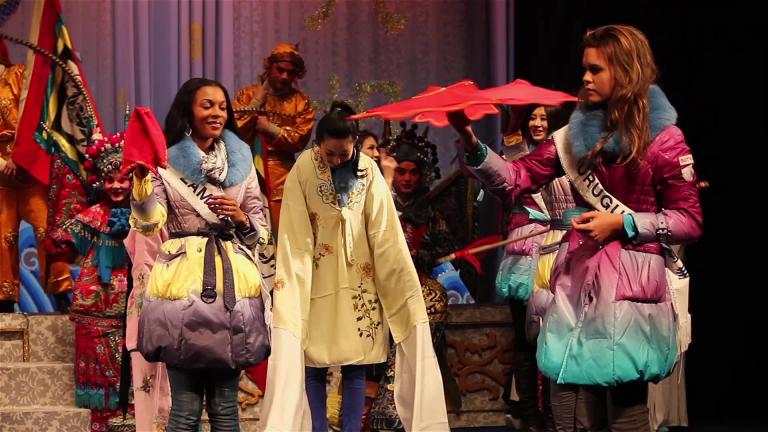Chinese traditional drama
4 min readThe drama is an ancient art. The Ancient Greek drama can date back to over 2,500 years ago, the Indian drama has a history of at least 1,600 years and the Chinese drama, according to popular belief in the Chinese academia, was born in the late 12thcentury(during the Southern Song and Jin dynasties) and thus has a history of nearly1,000 years. Though relatively young, the Chinese drama has been particularly robust. Today, the prosperity of the Ancient Greek drama can only be traced in the remaining grand theatres of the Ancient Greek, the Indian drama cannot be seen in modern times, while the Chinese drama has been passed down from generation to generation.The Chinese drama has been improving in both form and content and now includes over 300 genres and nearly 10,000 drama pieces.

Compared with dramas in other cultures, the traditional Chinese opera is distinctively characterized by the following features.
First, the roles are clearly identified. The traditional Chinese opera vigorously performs the function of educating common people and therefore needs to identify people of different types. Rank and order were extremely important for the Chinese society in the ancient times and many art forms educated people to obey laws and social orders with aesthetic means. Li Yu (1611-1680) of Qing Dynasty once commented on the Chinese opera in his book Xianqing Ouji(Sketches of Idle Pleasure),”A drama piece that intends to advocate filial piety is always about a man who shows perfect filial obedience to his parents. However, not all the stories in the drama piece are related to the lead role. Many stories are borrowed from other people with filial piety. Likewise, King Zhou is a fatuous and self-indulgent rule and many wrong-doings of other people are ascribed to him. Many other drama pieces to praise loyalty andkindness are like this.”The roles in the Chinese opera are intended to emphasize certain characters and this way of thinking can be clearly seen in the division of theroles. The roles, though different in different times, are divided into sheng(males roles), dan(young female roles), jing (roles with painted faces), mo(middle-aged and old male roles) and chou(clown roles).
Second, the performances are fictitious. One of the essences of the Chinese art is imitation of reality with no facilities. This feature can be clearly seen in the Chinese opera. With the traditional fictitious performance, the actor and actress tend to pay more attention to the aesthetic performance of their body movements instead of the closeness between reality and their movements. The viewers, likewise, do not ask for exact imitation of reality on the stage. The Chinese opera performance attaches great importance to aesthetic values such as the temperament, demeanors, body movements, singing skills and lines. For example, the fictitious performance of Du Liniang in the Kun Opera piece Youyuan Jingmeng, or The Peony Pavilion, turns a blank stage into a huge garden that brings both enormous beauty and gloomy moods and takes the viewers to a unique situation created by the Chinese opera.

Third, the formulas of performance forms are strictly prescribed. The traditional Chinese opera is a combination of four elements, namely chang(singing), nian(musical monologue and dialogue), zuo(acting) and da(fighting). People of various types present themselves on the stage with language, music and body movements, and together show the viewers stories of different plots. The singing, monologue and dialogue in the traditional Chinese opera are largely prescribed. For example, in the Kun Opera piece Dandaohui, or Guan Yu Going to a Banquet with a Single Broadsword the lead role Guan Yu sings at the beginning,”The Yangtze River runs to the east with thousands of waves and I travel on this small ship with the east wind.I have left my state and am now heading for the camp of my enemies with ill intentions. As a man of iron wills,I have no fear for this banquet.”This prescribed formula is not only used in this opera piece but also in other opera pieces.
Fourth, the stage is very simple. The stage of the Chinese opera has only a small
number of properties, which usually only include a desk and two chairs. This is mainly due to the fact that the performance of the Chinese opera is fictitious. Because of the virtual performance and the simple stage properties, the actors and the actresses can go to a different place or time very easily. For example,a general walks in a circle on the stage and this symbolizes that he is now in a different place that may be over athousand li away.A woman lights up a candle and this represents that the Sun has set in the west; after singing for a while, she blows off the candle and this represents that the Sun has rises in the east. Though this takes only a while, on the stage a night has passed. This virtual performance gives high mobility in space and time and shows people’s dominance over art.
Owing to the simplification of the stage and the stage background of the Chinese opera, the performance can be put on not only in places with formal stages such astemples, theatres(known as goulan in Chinese) and teahouses but also in the fields with temporary stages. In the living rooms and yards of people’s residences, Chinese opera can be performed smoothly. Sometimes even the river banks, boats, temple fairs and markets can be places for the Chinese opera.









